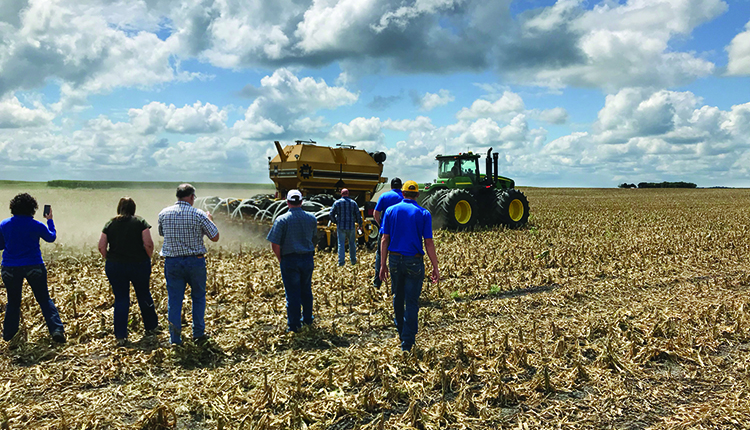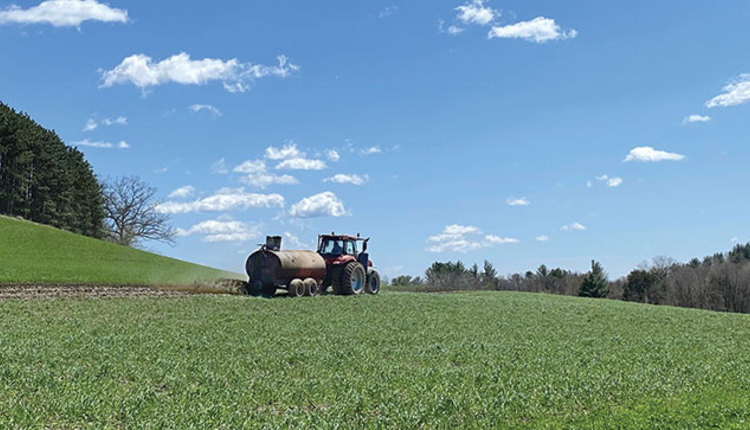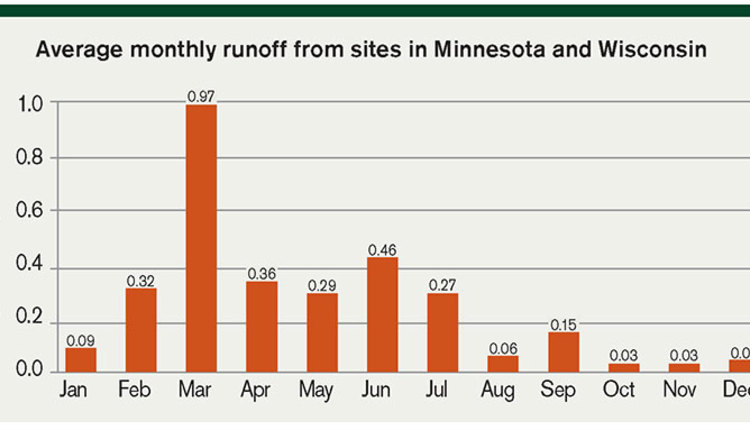The author serves as the agriculture water quality program manager for the University of Wisconsin-Madison Division of Extension. She would like to thank Lindsey Hartfiel and Monica Schauer for providing this information in their presentations at the Dairy Innovation Hub Symposium.
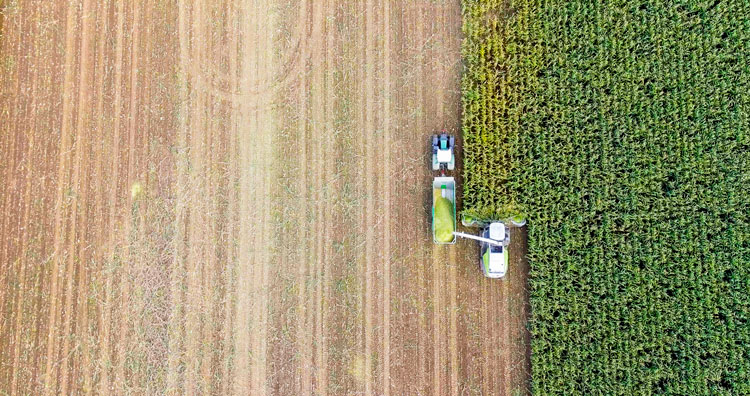
Corn silage is one of the main forages harvested for cattle feeding in the United States. Seven states made up over half of the 6.86 million acres harvested in 2022. Wisconsin leads the nation in corn silage production.
While there are benefits to corn silage from a nutrition standpoint as well as ease of harvest, harvested corn silage fields can be an area of environmental vulnerability. The areas of opportunity for water quality improvement in these fields relate to management changes that prevent long periods of exposed soil.
Differences between crops
In Wisconsin, runoff happens annually, no matter the crop type, because of long periods of frozen soil, spring rain and snowmelt, and typically over 35 inches of precipitation per year. While runoff is often controlled by weather, especially while the soil is frozen, the amount of soil and nutrient loss contained in the runoff varies by crop type and can be controlled by management. Typically, annual runoff from Wisconsin cropping systems is less than 5 inches. This does vary slightly by crop type and depending on the weather in any given year.
Discovery Farms data show that there is more risk for soil loss during corn silage years. This is based on the amount of soil disturbance or tillage and the amount of time that the soil is bare (or bare and disturbed) in the fall, winter, spring, and early summer. Overall, most soil losses occur during May and June, and in years following corn silage, the soil is largely bare from September until the following June.
Discovery Farms data reveal that average monthly soil loss following corn silage is three to five times higher on tilled fields compared to no-till fields. Corn silage has the highest risk for soil loss compared to alfalfa, corn for grain, soybean, and pasture (Figure 1).

On corn silage acres, no-till management will reduce soil losses. In addition, corn silage fields are one of the easiest places to establish a cover crop, since there is still plenty of growing season left after harvest. Farmers are even seeing success with planting the following year’s crop directly into the green cover crop. This amount of soil protection during May and June — when the risk for soil loss is the highest — will help keep soil in place.
Noticeable nutrient losses
When soil leaves the field, we aren’t just losing productivity and moving sediment somewhere downstream; phosphorus also goes with it. From Discovery Farms research, phosphorus losses are higher from corn silage fields as well. Most of the loss is particulate phosphorus (Figure 2), which means it is bound to soil. Data indicate that lessening soil loss through reduced tillage and greater soil cover is the first step to cutting phosphorus loss, and thus improving a farm’s water quality impact.
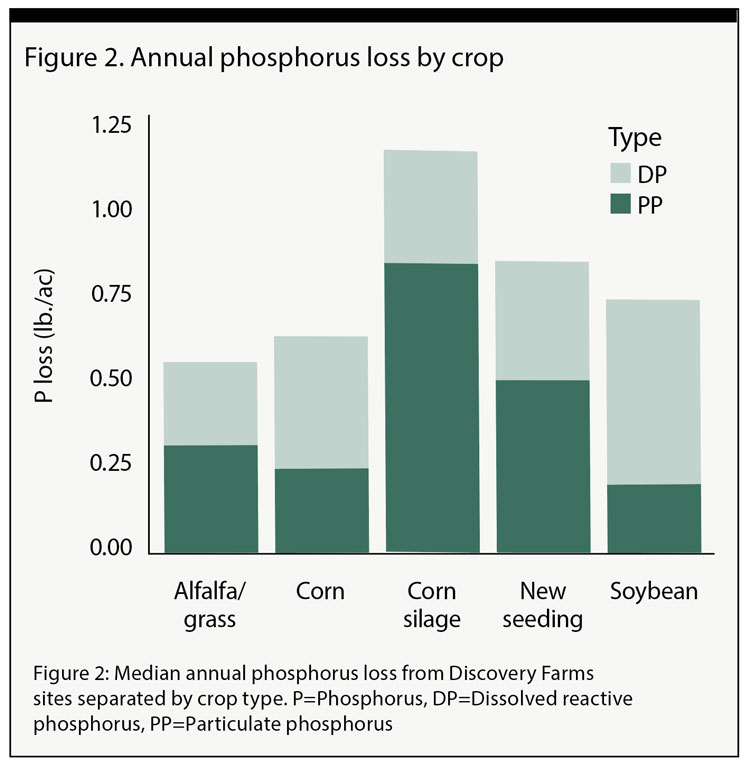
Establishing a cover crop after corn silage harvest has manure application and nutrient uptake benefits in addition to soil conservation benefits. In a study done by Matt Ruark and Monica Schauer with the University of Wisconsin-Madison Department of Soil Science, they looked at the biomass and nitrogen uptake of a rye cover crop following corn silage.
In terms of biomass, 60 pounds per acre was the best rye seeding rate to optimize ground cover and nitrogen uptake benefits. This seeding rate resulted in 72% ground cover in the spring, which was similar to ground cover at higher seeding rates. At this seeding rate, the nitrogen uptake from the rye cover crop was 43 pounds per acre. Higher seeding rates did not yield better environmental benefits, but it would be an extra cost to the farmer.
Capture the manure nutrients
In this study, liquid manure was surface applied at 10,000 gallons per acre just before the rye was planted. In the absence of a cover crop, the nitrogen and phosphorus from manure would have no living roots to utilize the nutrients for six to seven months. This allows nutrients to leave the field via runoff and leaching, especially when there is very little residue left on the field after corn silage harvest.
In terms of impact to the following corn crop harvested for grain, the economic optimum nitrogen rate was slightly higher in the cover-cropped areas when soil nitrate values in non-cover-cropped areas were similar from fall to spring. However, in the other year of the trial, soil nitrate values in noncover-cropped areas fell from fall to spring due to nitrate leaching. This resulted in similar optimum nitrogen rates, and no significant impact to yield, whether the area had a cover crop or not. If manure or fertilizer needs to be applied in the fall, it is best to have a living plant in the soil to capture some of those nutrients.
Corn silage fields are an opportunity to make positive water quality impacts. First, prioritize no tillage or low soil disturbance after corn silage harvest to cut back soil loss through surface runoff. Next, plant a cover crop immediately after harvest to protect the soil from erosion and to capture nutrients so that they will be available for future crops and, most importantly, not lost to surface or groundwater resources. As you continue to evaluate your farm’s future, consider ways to reduce the vulnerability of your current system to soil and nutrient loss.






